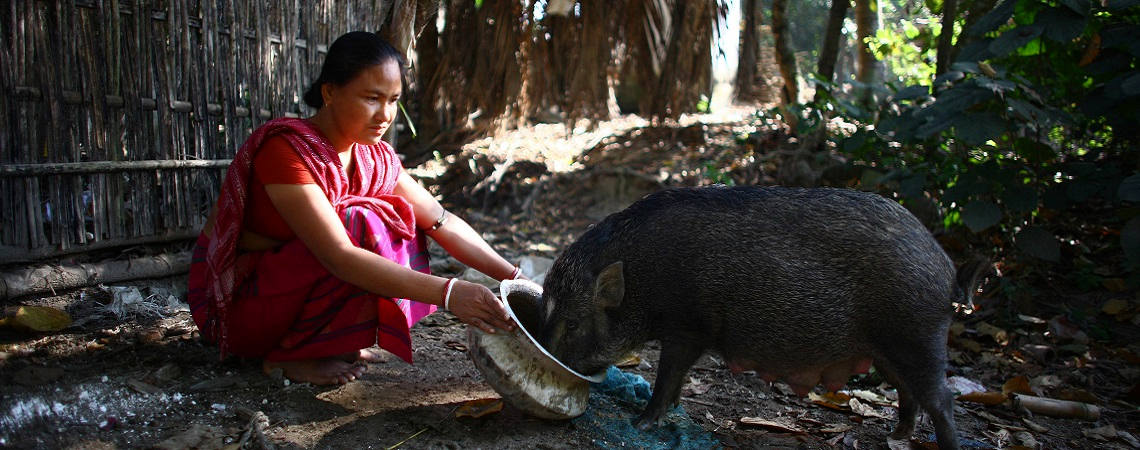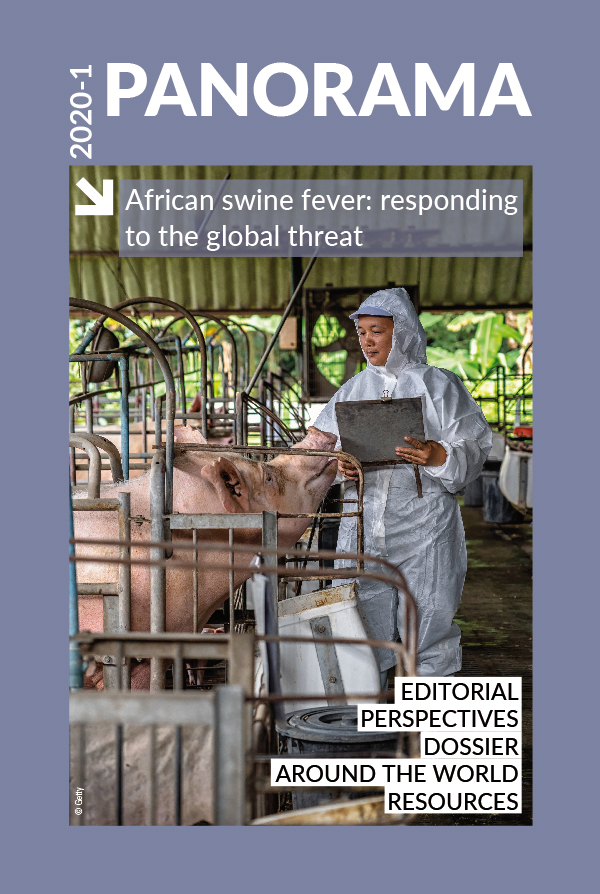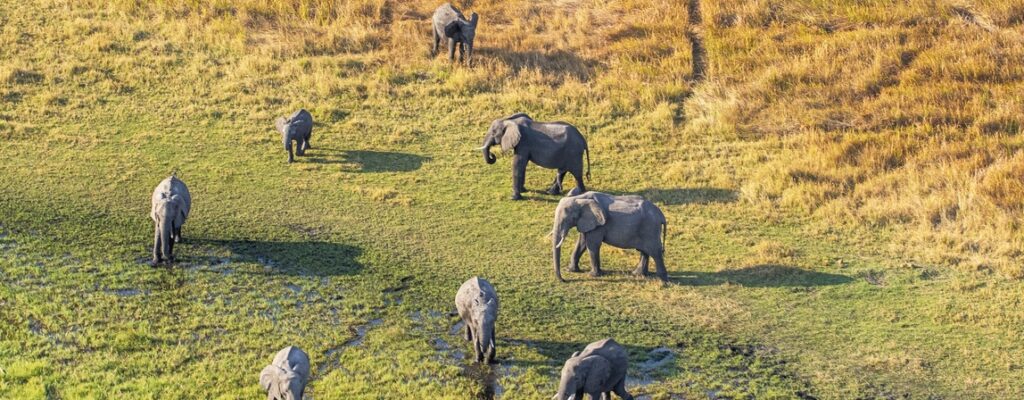Perspectives Posted on 2020-07-07 10:11:14
Opinions and strategies
The pig value chain in South-East Asia and challenges to disease management
Keywords
Authors
Y. Qiu(1)*, L. Weber-Vintzel(1) & R. Abila(1)
(1) OIE Sub-Regional Representation for South-East Asia.
* Corresponding author: y.qiu@oie.int
Production systems
Pigs are raised in a variety of settings in South-East Asia, from small family units of scavenging and backyard pigs, to small-to-medium-scale semi-commercial units, and large intensive units. Today, small pig-rearing operations in the back yard with no or limited biosecurity are the predominant practice and the one most vulnerable to disease risks. Pig farming in peri-urban areas is becoming more commercially oriented, and such farms are usually well equipped and managed, with a high level of biosecurity and productivity.
Trade practices
The pig trade is driven by market demand and price differentials. Traditionally, town traders, including slaughterhouse operators and market sellers, come to villages to purchase pigs to supply local demand. Improved road infrastructure has also facilitated long-distance trade from rural producers to big cities and even overseas markets. However, in most areas, pig movements are difficult to monitor, due to the lack of effective tracing systems, and there are many unregulated movements. Furthermore, the current spread of African swine fever (ASF) dramatically affects the price of pigs and pork, leading to changes in trade and movement patterns, both locally and internationally.
Challenges facing disease control
The nature of smallholder pig production and movement patterns in South-East Asia have created obstacles to the successful implementation of disease control strategies. Many pig production areas face a lack of resources for disease control, including a shortage of veterinarians. Ineffective tracing and inspection systems also promote disease spread through the movement of live pigs and pig-derived products. Furthermore, fomites, such as contaminated trucks and animal feed, can play a role. Human behaviour is often the underlying cause of disease spread. Improving awareness of disease prevention and control measures among those involved in the pig value chain and promoting good biosecurity practices are essential in achieving a sustainable approach to protect safe pig production and trade. Multidisciplinary teams, involving veterinarians, animal production professionals, socio-economists, and communication officers are needed to explore how human behaviour can be changed to mitigate disease risk. This is particularly important, given the recent introduction and spread of ASF, which is threatening the entire South-East Asian pig industry.
| More information on the pig production system and value chain in South-East Asia |
http://dx.doi.org/10.20506/bull.2020.1.3120












